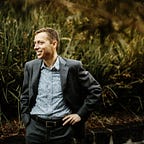What does your organisation stand for?
As a Frenchman traveling the world, working and living in different countries, I have learnt to adjust to new cultures rapidly. However, there is a challenge that still frustrates me at times: how to translate some of my mother tongue’s expressions that capture a complex concept with beautiful simplicity?
Take “raison d’être” for instance, loosely translated as “the reason for which a person or organization exists”, which for me crystalizes the most important and relevant challenge of this new business era.
For most organizations that produce an annual report, there is no escaping the mission and vision statements. So one might expect to find clues to an organisation’s purpose in there. However, as many organisations sleepwalk through these forced communication exercises, the opportunity to tackle the key question of purpose is lost. And as a consequence, many executives serve up a sophisticated menu of products and services in answer to the question: what does your organisation stand for?
In any organisation this “products and services menu” answer would be problematic.
First, many studies have now demonstrated the direct correlation between purpose, employee engagement and sustainability of business results. I won’t dive into the question of employee engagement now but you can find a few useful links on this fascinating question at the end of this blog post.
Without a clear purpose, the talent and engagement race is going to be a challenging one.
Another problem is that, nowadays, products and services can be disrupted overnight. If your organisation defines itself by its products and services, then there might not be much left of it when the Uber or Airbnb of your industry will arrive, and they will.
How can you adapt creatively, rapidly, when you do not know what you are about?
In the specific context of business transformation, a clear purpose is even more critical. As an advisor on transformation, this is one of the first areas I explore with leaders who want to embark on major change. Not to set a goal for the transformation, or gauge the level of ambition, but more fundamentally to understand the purpose of their organisation.
This clarity of understanding is critical in order for executives to build a meaningful transformation program. Later on, the purpose becomes a reference point, a compass. The inconvenient truth about business transformation is that it is hard, long and challenging in very different ways for senior leaders, middle management and staff. Transformation is a serious commitment by any organisation. Budgets typically run to several millions of dollars over a multi-year timeframe, with the program sometimes outlasting key decision makers.
Without a reliable compass, executives could put their organisation through incomprehensible change programs that leave staff disoriented, or with strong sceptical feelings that, anyway,
“plus ça change, plus c’est la même chose”, Jean-Baptiste Alphonse Karr (“the more it changes, the more it’s all the same”).
In 2015 I had the opportunity to work with aged care providers in Australia as the industry continued its disruptive shift toward consumer-directed care. I encountered two providers that, at first sight looked like twins, both undertaking similar transformation initiatives to adapt, change and re-invent themselves, but they articulated their purpose in very different ways.
The first aspired to “increased quality of life for elder Australians and their families thanks to affordable domestic services via friendly staff”.
The other believed in “supporting elder Australians and their families in all ways necessary to have a still positive experience of a difficult part of their life, the end of it, and make sense of it”.
Cheap house cleaning and domestic services on one side of the ring versus making sense and supporting the end of life on the other side. Will they still be competing in three years? It seems to me that those purposes should take them on journeys to quite different destinations…
What is the raison d’être of your organisation?
Whether you’re transforming your business or not, I would encourage you to spend a few minutes reflecting on and writing what your organisation stands for. And even if it takes more than a few minutes, it will be time well spent.
Note: this article was originally published on LinkedIn in February 2016
Useful links:
New Research: How Employee Engagement Hits the Bottom Line, by Tony Schwartz, Harvard Business Review, November 8, 2012
GALLUP employee engagement website
TED Talk, Simon Sinek, How great leaders inspire action
The Founder of TOMS on Reimagining the Company’s Mission, by Blake Mycoskie, Harvard Business Review, JANUARY–FEBRUARY 2016 ISSUE
